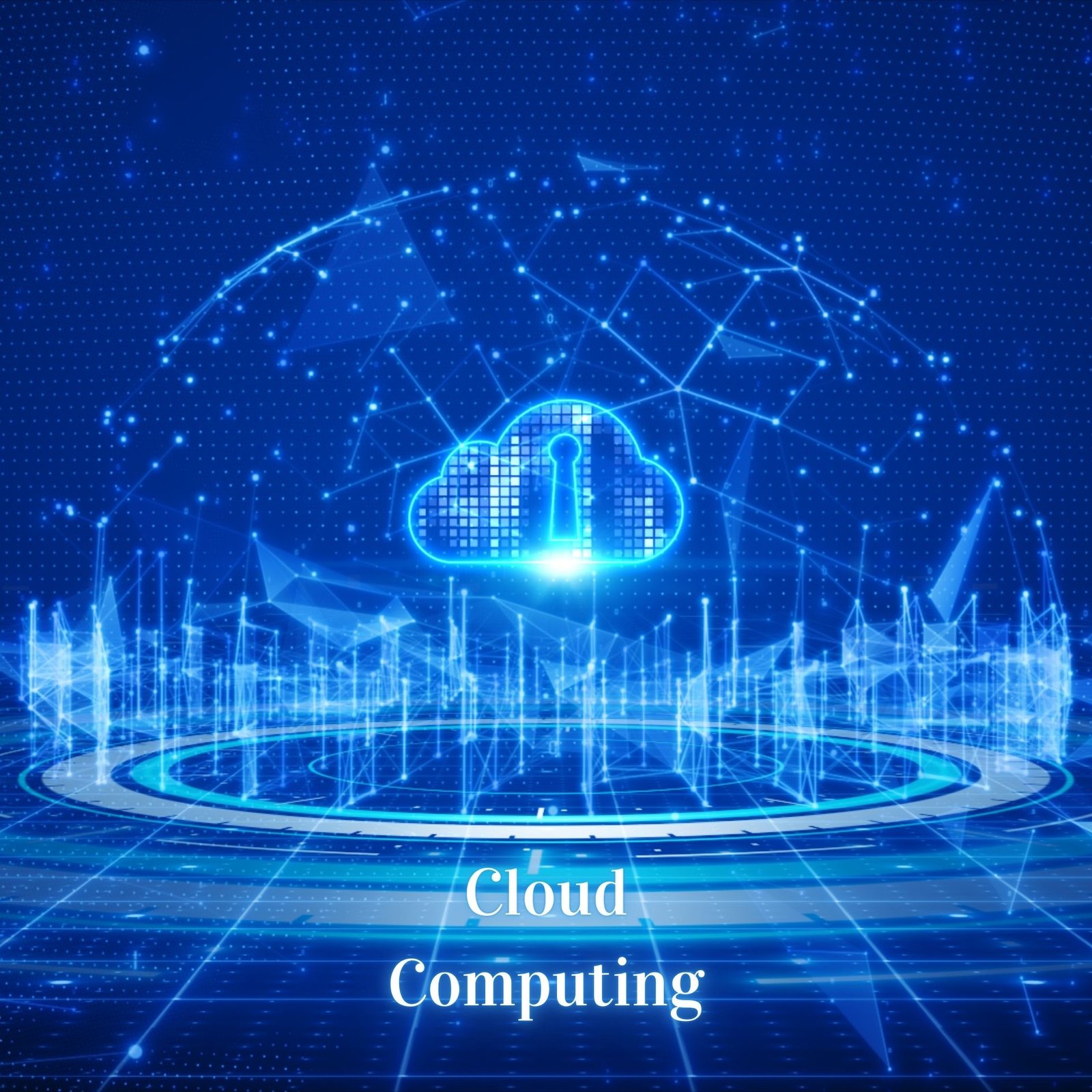Table of Contents
Introduction
Cloud computing has revolutionized the way businesses and individuals store and process data. From social media platforms to massive corporate databases, the cloud has become an integral part of daily life. With companies like Amazon, Google, and Microsoft leading the way, cloud services are expected to grow exponentially in the coming years.
But behind the convenience of cloud computing lies a troubling reality—its environmental impact. While many people imagine “the cloud” as something intangible floating in cyberspace, in reality, it relies on massive data centers that consume enormous amounts of energy. These centers contribute significantly to carbon emissions, electronic waste, and even water consumption.
This article explores the environmental impact of cloud computing, uncovering the industry’s “dirty secret” while also highlighting the steps being taken to mitigate its effects.
What Is Cloud Computing?
Cloud computing refers to the delivery of computing services—including storage, processing, and networking—over the Internet. Instead of relying on local servers or personal computers, businesses and individuals use remote data centers operated by cloud providers.
Key Components of Cloud Computing:
- Data Centers: Facilities that store and process vast amounts of information.
- Servers: Physical machines that host websites, apps, and databases.
- Virtualization: Technology that allows multiple virtual machines to run on a single physical server.
- Networking: The infrastructure that connects cloud users to data centers.
Major Cloud Service Providers:
- Amazon Web Services (AWS) – The largest cloud provider, powering millions of websites and applications.
- Microsoft Azure – A strong competitor that offers cloud solutions for businesses and governments.
- Google Cloud Platform (GCP) – Focused on AI and data analytics.
- IBM Cloud, Oracle Cloud, Alibaba Cloud – Other significant players in the industry.
While cloud computing provides efficiency and scalability, its environmental impact is often overlooked.
The Energy Consumption of Data Centers
How Much Energy Do Data Centers Use?
Data centers require massive amounts of energy to operate. They house thousands of servers running 24/7, consuming electricity for both computing and cooling. According to studies, data centers account for 1-2% of global electricity consumption, a number expected to rise as demand increases.
Comparing Cloud to Other Industries
To put it into perspective:
- The global aviation industry contributes about 2.5% of CO₂ emissions—cloud computing is catching up.
- A single data center can consume the same amount of electricity as 50,000 homes in a year.
Without sustainable energy sources, cloud computing could become one of the biggest contributors to climate change.
Carbon Footprint of Cloud Computing
Data centers rely heavily on electricity, much of which comes from fossil fuels. This results in significant greenhouse gas emissions, contributing to global warming.
Key Factors Increasing Carbon Emissions:
- Server Operations: Running millions of virtual machines requires constant power.
- Cooling Systems: Keeping servers from overheating consumes massive energy.
- Backup Power Generators: Many data centers rely on diesel-powered backup systems in case of outages.
According to the International Energy Agency (IEA), cloud computing could emit 3.2% of total global carbon emissions by 2030 if no changes are made.
Water Consumption in Data Centers
Cooling data centers isn’t just about electricity—it also consumes enormous amounts of water. Many data centers use evaporative cooling, which requires millions of gallons of water to maintain optimal temperatures.
Environmental Impact of Water Use:
- Data centers can use millions of liters of water per day.
- In drought-prone areas, this puts additional strain on local resources.
- Some tech giants, including Google and Microsoft, are investing in water-efficient cooling solutions, but challenges remain.
With growing concerns about water scarcity, cloud providers must rethink their cooling strategies.
E-Waste and Cloud Computing
The hardware behind cloud computing—servers, networking equipment, and storage devices—eventually becomes obsolete. This results in electronic waste (e-waste), one of the fastest-growing environmental issues.
Challenges of E-Waste Management:
- Limited Recycling Infrastructure: Many cloud companies struggle to recycle old equipment properly.
- Toxic Materials: Servers contain lead, mercury, and other harmful chemicals that can leach into the environment.
- Planned Obsolescence: Frequent hardware upgrades contribute to excessive waste.
As cloud computing expands, the industry must find ways to improve hardware sustainability and reduce e-waste.
Renewable Energy Initiatives by Cloud Providers
As concerns over the environmental impact of cloud computing grow, major cloud providers have started investing in renewable energy and carbon offset programs to reduce their footprint. But how effective are these initiatives?
Tech Giants Leading the Charge
- Google: Became carbon neutral in 2007 and aims to operate 100% on renewable energy by 2030.
- Microsoft: Committed to being carbon negative by 2030, meaning it will remove more carbon than it emits.
- Amazon (AWS): Pledged to reach net-zero carbon emissions by 2040 and is investing in wind and solar farms.
- Apple & Facebook: Both operate some of the greenest data centers with renewable energy sources.
Are These Efforts Enough?
While these companies are making significant strides toward sustainability, there are still challenges:
- Not all data centers run on renewable energy—many still rely on coal-powered electricity grids.
- The use of carbon offsets is controversial, as some critics argue it doesn’t directly reduce emissions.
- The growing demand for cloud services could outpace these sustainability efforts.
The transition to 100% green energy is a step in the right direction, but without broader industry-wide changes, cloud computing will continue to strain the environment.
Sustainable Cloud Computing: Is It Possible?
Many experts argue that cloud computing can become fully sustainable if companies adopt innovative solutions and rethink their infrastructure.
Key Innovations for a Greener Cloud:
- Energy-Efficient Servers: New server designs use less power and generate less heat, reducing cooling needs.
- Alternative Cooling Methods: Instead of using water-intensive cooling, some data centers use liquid immersion cooling or AI-driven cooling optimizations.
- Data Center Relocation: Placing data centers in cooler climates reduces the need for air conditioning.
- Decentralized Cloud Computing: Instead of massive centralized data centers, distributing workloads across smaller, localized centers can reduce energy demands.
While these solutions show promise, implementing them on a global scale will take time and massive investments from tech giants.
Cloud Computing vs. Traditional IT: Which Is Greener?
One argument in favor of cloud computing is that it is more energy-efficient than traditional on-premise IT infrastructure. But how do they compare? Factor Cloud Computing Traditional IT Energy Use Shared resources reduce waste Individual servers often run at low efficiency. Carbon Footprint Larger overall impact but improving with renewables Higher per-company emissions. Hardware Usage Optimized Infrastructure Companies replace hardware more frequently.Cooling Efficiency Advanced cooling technologies Often outdated cooling methods
The Verdict:
- Cloud computing is more efficient than traditional IT but still far from carbon neutral.
- Companies should choose cloud providers that prioritize renewable energy and sustainable practices.
The Role of AI in Reducing Cloud’s Environmental Impact
Artificial Intelligence (AI) is playing an increasingly important role in optimizing cloud efficiency and reducing environmental impact.
AI-Powered Sustainability Efforts:
- Smart Cooling Systems: AI can predict cooling needs and adjust accordingly, reducing energy consumption.
- Energy Optimization: AI can shift workloads to data centers with surplus renewable energy.
- Predictive Maintenance: AI detects potential hardware failures before they occur, preventing unnecessary replacements and reducing e-waste.
Real-World Examples:
- Google DeepMind AI reduced data center cooling energy by 40%, setting a benchmark for AI-driven efficiency.
- Microsoft’s AI-powered data centers optimize energy use by adjusting processing loads dynamically.
With continued advancements, AI has the potential to make cloud computing significantly more sustainable in the coming years.
Government Regulations and Policies
Governments worldwide are beginning to recognize the environmental impact of cloud computing and are implementing regulations to curb its effects.
Key Regulations and Policies:
- EU Green Deal: Aims to make data centers carbon neutral by 2030.
- U.S. Clean Energy Standards: Some states require data centers to use renewable energy.
- China’s Data Center Energy Efficiency Policies: Encourages companies to use greener solutions.
Challenges in Regulation:
- Many cloud providers operate globally, making enforcement difficult.
- Loopholes allow companies to claim “carbon neutrality” while still using fossil fuels.
- Stricter regulations could drive up costs for cloud services, impacting businesses and consumers.
Despite these challenges, stronger policies are needed to hold cloud providers accountable for their environmental impact.
What Can Businesses Do to Reduce Their Cloud Footprint?
Companies that rely on cloud computing can take steps to minimize their environmental impact.
Best Practices for Sustainable Cloud Use:
- Choose Green Cloud Providers: Opt for cloud services that use renewable energy (e.g., AWS, Google Cloud, Microsoft Azure).
- Optimize Data Storage: Delete unnecessary files and use efficient compression.
- Use Energy-Efficient Coding Practices: Well-optimized code reduces server load and power consumption.
- Monitor Cloud Usage: Use tools to track energy usage and identify wasteful processes.
By implementing these strategies, businesses can lower their carbon footprint while still benefiting from cloud computing.
What Can Consumers Do?
While businesses play a major role, individual users also contribute to cloud pollution.
Steps Consumers Can Take:
- Reduce Digital Clutter: Delete old emails, files, and cloud backups you no longer need.
- Stream Responsibly: Reduce video streaming quality when possible to lower data center load.
- Use Eco-Friendly Apps: Choose applications that prioritize energy efficiency.
- Support Green Tech Companies: Prefer services from companies committed to sustainability.
Even small changes in digital habits can make a big difference when adopted by millions of people.
The Future of Cloud Computing and Sustainability
With cloud computing set to expand exponentially, the need for sustainable solutions has never been greater.
What Can We Expect in the Future?
- 100% Renewable-Powered Cloud Services: More companies will transition to solar, wind, and hydro-powered data centers.
- Advancements in AI & Automation: Smart systems will reduce waste and improve efficiency.
- Breakthroughs in Cooling Technology: New cooling methods will drastically cut energy and water consumption.
- Stronger Regulations: Governments will push for stricter environmental policies in the tech industry.
If companies and consumers work together, cloud computing can become a force for good rather than a contributor to climate change.
Conclusion
Cloud computing has transformed the world, but its hidden environmental costs can no longer be ignored. Data centers consume massive amounts of electricity, water, and raw materials, making them a major contributor to global pollution.
However, with innovations in AI, green energy, and sustainable practices, cloud computing can become environmentally friendly. Tech giants, businesses, and consumers all have a role to play in reducing the industry’s impact.









